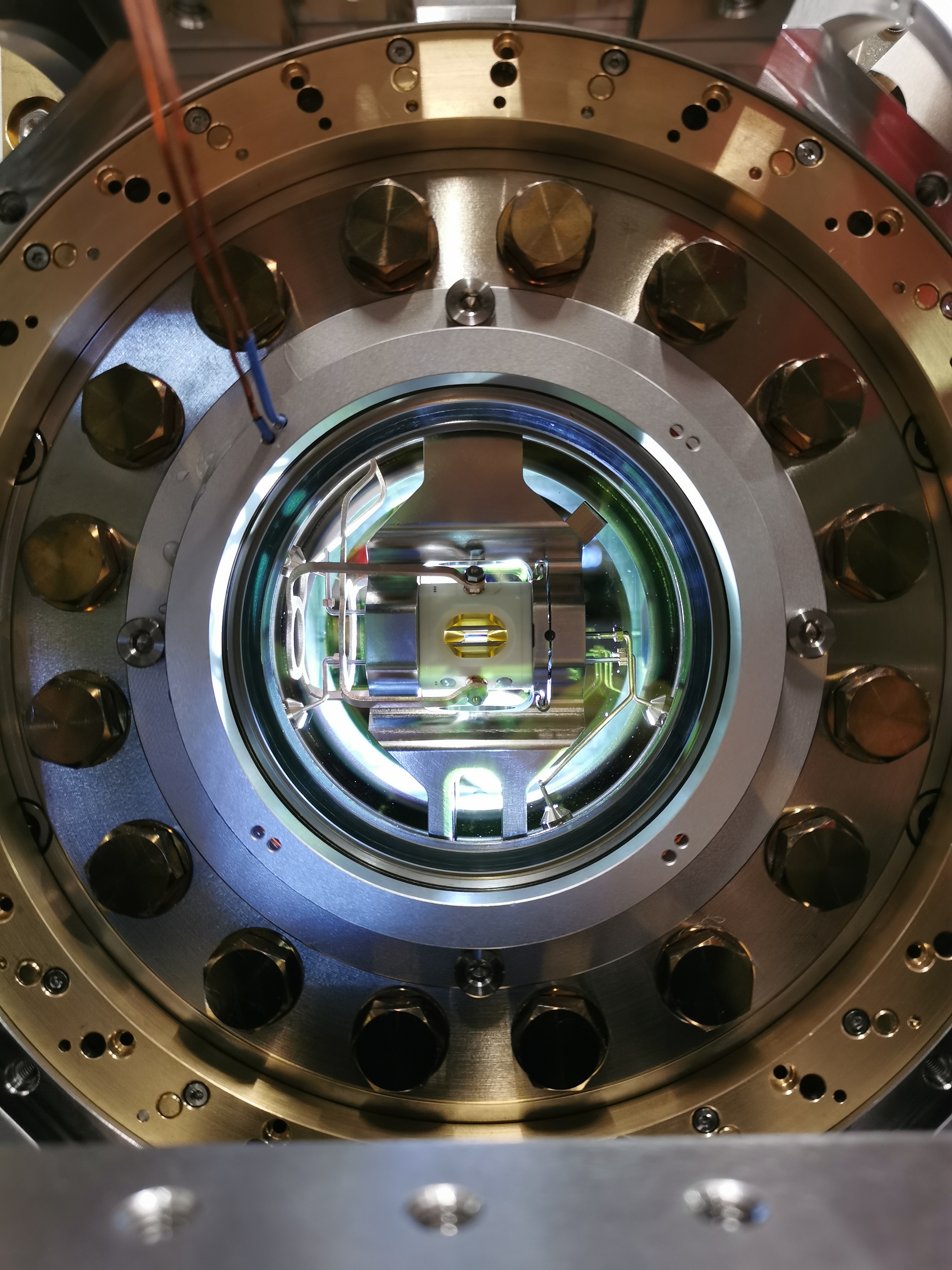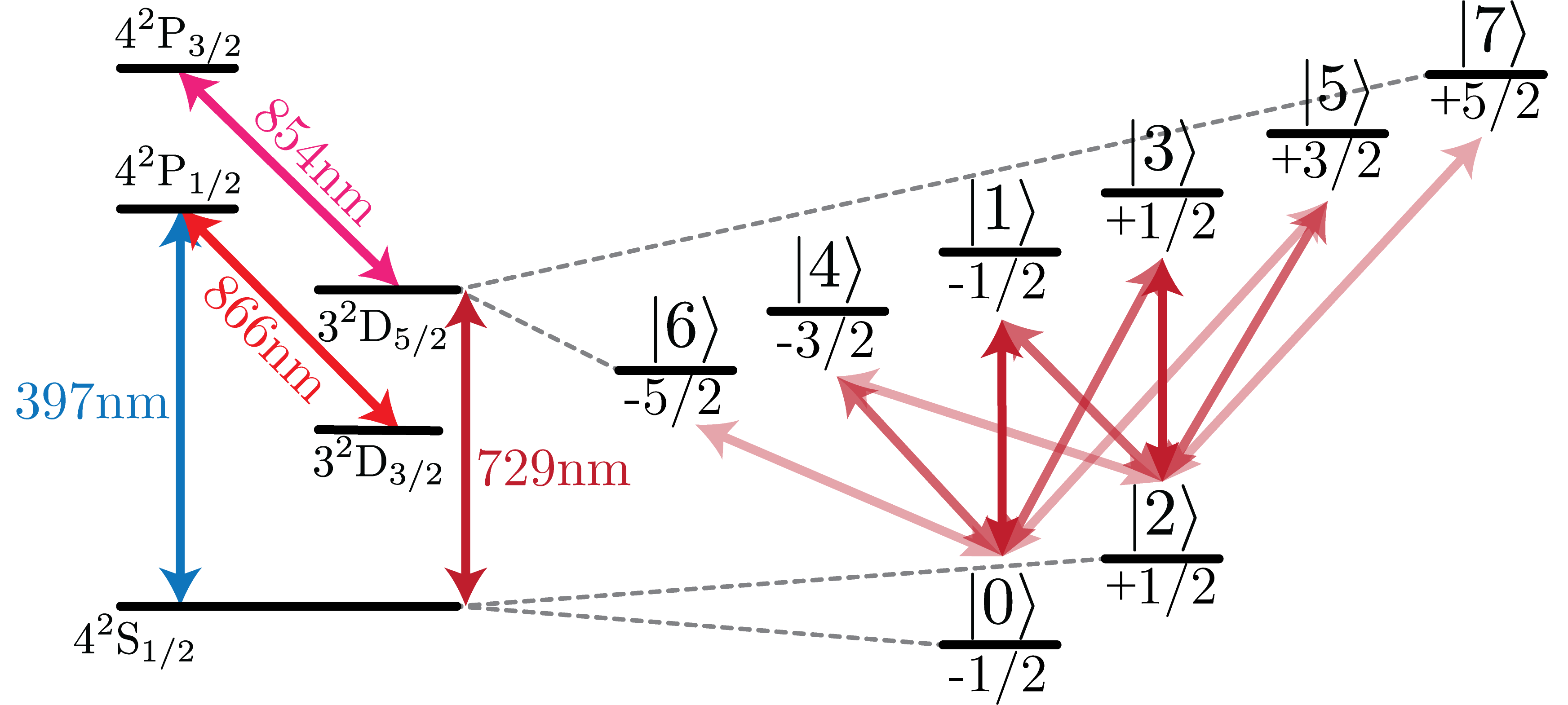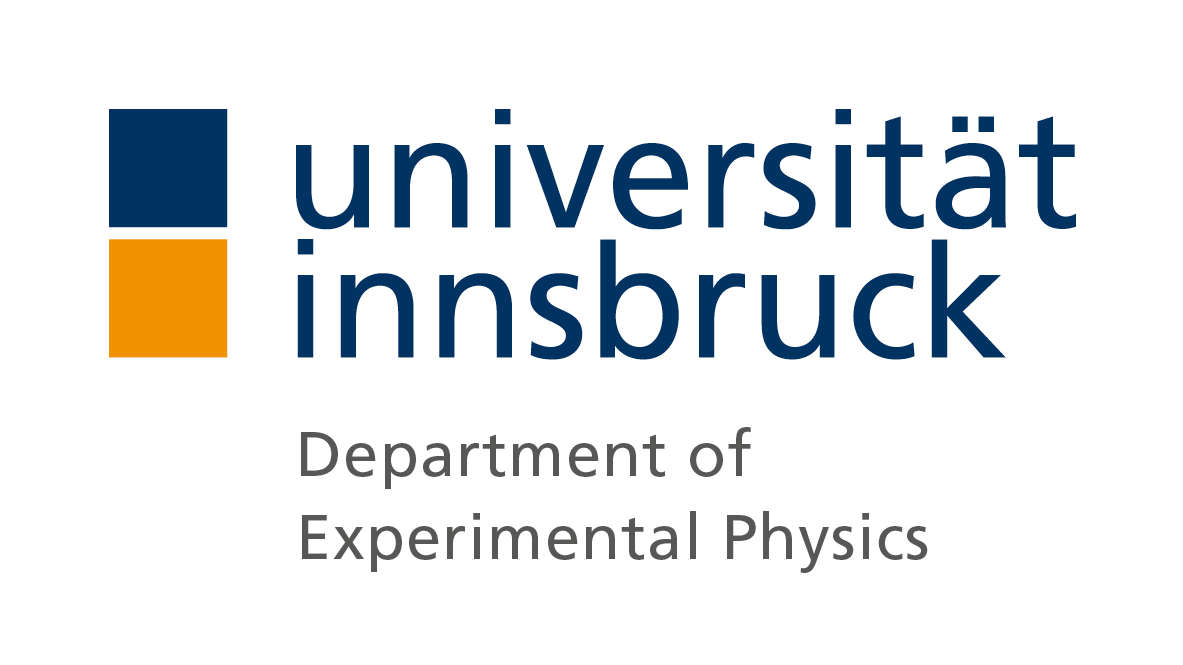Quantum Information beyond zero and one
Quantum information processing has evolved rapidly from rudimentary control over individual particles 25 years to performing complex calculations on sizable quantum registers today. Yet, despite fundamentally different working principles, much of the field builds on the decades-old paradigm of binary information processing. The underlying quantum information carriers, however, are inherently multilevel quantum systems. Our group aims to unlock the unused potential within today's quantum systems across a range of research directions, including:
- Quantum Information - How does the behaviour and the properties of quantum information change in higher dimensions?
- Quantum Computing - How can we use the full Hilbert space for more efficient quantum computing?
- Quantum Simulation - How can we simulate physical systems in the most natural and efficient way?
Our work has been kindly supported by many projects, including:
The EU programs: QUDITS, NeQST, TNiSQ
National excellence funding, including the FFG projects COMBINATION, and MUSIQ
Trapped Ion Qudit Platform
Trapped ions are among the leading platforms for quantum information processing. Using a combination of static and dynamic electric fields we trap and cool singly-charged atoms (ions) ultra-high vacuum (Fig.1). The electronic states of these ions are then used to store and process quantum information via laser pulses. Depending on the ion species, there may be tens of accessible, long-lived electronic states that can be controlled with exquisite precision. Our current platform uses Ca40, which has 8 states (Fig 2), of which only two are typically used for quantum information processing. In contrast to classical information, however, we cannot bunch these states together into a group that we call Zero and a group that we call One. Instead quantum control must work on each individual level and we pioneered the use of all of them for information processing using qudits instead of qubits (Nature Physics 18, 1053 (2022)). Beyond these basic building blocks, the ion-light interaction offers a wide range of possibilities that we explore for developing a flexible toolbox that can be configured for the optimal realization of a wide range of computational tasks (Nature Commun. 14, 2242 (2023)).


Fig 1.: Left: The ‘Linear trap’ original blade trap in use for two decades. Right: The modern successor trap AQT PINE as used in the QUDITS setup.
Quantum Information
In contrast to their binary counterpart, qudit systems are much richer in their Hilbert space structure. Much of the theoretical understanding that has been developed over the past years and decades does not generalize easily to qudits, leaving a wide range of open questions to be explored. We are particularly interested in studying fundamental properties including coherence (Physical Review X 8, 041007 (2018)) and entanglement (Quantum 7, 1141 (2023)), as well as quantum information primitives such as Clifford and Stabilizer structures that lay the groundwork for advanced protocols like quantum error correction and measurement-based computing.

FIG 2: Level scheme of Ca-40: Already Ca-40, which is one of the simplest ions, offers 8 levels that can be controlled with exquisite precision.
Quantum Computing
Quantum computing has fundamentally changed how we think about information processing and opened a door to drastically more efficient computing for a certain class of problems. Yet, despite changing most rules of the game, we tend to stick to a binary format for the information that is processed. While this makes sense in the classical world, quantum systems are naturally suited for information processing using higher-valued logic. We are interested in two kinds of questions. On the one hand, we want to understand which computational problems benefit the most from a qudit approach and what design criteria drive the benefit of qudit quantum computing (Quantum 7, 1141 (2023)). On the other hand, we explore how the qudit Hilbert space can be used to enhance conventional qubit-based computing approaches (PRX Quantum 3, 040310 (2022), Physical Review X 12, 041035 (2022))
Quantum Simulation
One of the great promises of quantum computing is that it enables the efficient study of physical systems that are inaccessible to classical methods, such as aspects of chemistry, high-energy physics, and solid-state physics. Such systems are typically dominated by strong quantum effects, precluding classical simulation, and occupy high-dimensional Hilbert spaces. Hence, despite fundamental advantages of quantum simulation, realizing such simulations remains highly challenging when the simulator is limited to binary information processing. Using instead a platform that natively supports high-dimensional information processing enables the direct study of these models with vastly increased efficiency, thereby greatly expanding the reach of current and future quantum devices. We demonstrated this for archetypal examples in high-energy physics (arXiv:2310.12110 (2023)).
The Qudit team is always looking for Master’s students, PhD students, and postdocs! Do not hesitate to inquire with our principal investigator, Martin Ringbauer (
Project Members

Qudits team, September 2025
- Timo Spalek (Master Student)
- Raphael Poloczek (Master Student)
- Lisa Parigger (Master Student)
- Moritz Lautenbach (Master Student)
- Michael Meth (PhD Student)
- Tim Gollerthan (PhD Student)
- Peter Tirler (PhD Student)
- Manuel John (PhD Student)
- Keshav Pareek (PhD Student)
- Lukas Gerster (Postdoc)
- Martin Ringbauer (Principal Investigator)
Former Members: Claire Edmunds, Markus Siegl


